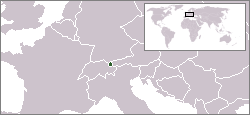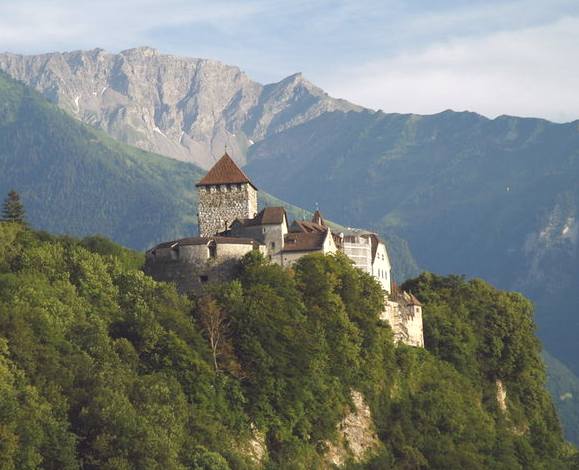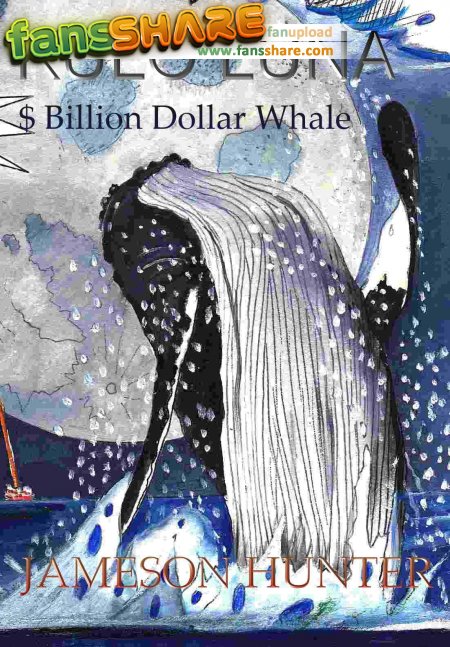|
LIECHTENSTEIN
Please use our A to Z INDEX to navigate this site
|
|||
|
The Principality of Liechtenstein (German: Fürstentum Liechtenstein) is a tiny, doubly landlocked country in Western Europe, bordered by Switzerland to its west and by Austria to its east. Mountainous, it is a winter sports resort, though it is perhaps best-known as a tax haven.
Geography
Tiny Liechtenstein, not quite as large as Washington, DC, lies on the east bank of the Rhine River south of Lake Constance between Austria and Switzerland. It consists of low valley land and Alpine peaks. Falknis (8,401 ft; 2,561 m) and Naafkopf (8,432 ft; 2,570 m) are the tallest.
Government- Hereditary constitutional monarchy.History
The Liechtensteiners are descended from the Alemanni tribe that came into the region after A.D. 500. Founded in 1719, Liechtenstein was a member of the German Confederation from 1815 to 1866, when it became an independent principality. It abolished its army in 1868 and has managed to stay neutral and undamaged in all European wars since then. Liechtenstein still claims 1,600 sq km of Czech territory (the royal family's ancestral home) confiscated in 1918; the Czech Republic insists that restitution does not go back before Feb. 1948, when the Communists seized power. In a referendum on July 1, 1984, male voters granted women the right to vote in national (but not local) elections.
Blacklisted in 2000 as a center for money laundering, Liechtenstein toughened its laws and made major efforts to clean up its financial practices. In 2002, the country was removed from the OECD's (Organization of Economic Cooperation and Development) blacklist.
In March 2003, Liechtenstein's people overwhelmingly voted to give its prince more powers, including the right to dismiss governments and approve judicial nominees. Prince Hans Adam II had threatened to leave the country if his demands for more authority were not met. Before the vote, he had already possessed more power than any other European monarch.
In Aug. 2003 he announced that he would give up the day-to-day ruling of the country in one year's time. In Aug. 2004, his son, Prince Alois, 36, became regent of Liechtenstein, while Hans Adam II remained the official head of state.
History
The modern territory of Liechtenstein formed at one time (an albeit diminutive) part of the ancient Roman province of Raetia. For centuries this territory, geographically removed from European strategic interests, had little impact on the tide of European history. Prior to the reign of its current dynasty, the region was enfiefed to a line of the counts of Hohenems.
The Liechtenstein dynasty, from which the Principality takes its name (rather than vice-versa), comes from Castle Liechtenstein in faraway Lower Austria, which the family possessed from at least 1140 to the 13th century, and from 1807 onwards. Through the centuries, the dynasty acquired vast swathes of land, predominantly in Moravia, Lower Austria, Silesia and Styria, though in all cases, these territories were held in fief under other more senior feudal lords, particularly under various lines of the Habsburg family, which several Liechtenstein princes served as close advisors. Thus, and without any territory held directly under the Imperial throne, the Liechtenstein dynasty was unable to meet a primary requirement to qualify for a seat in the Imperial diet, the Reichstag.
The family yearned greatly for the added power which a seat in the Imperial government would garner, and therefore searched for lands to acquire which would be unmittelbar or held without any feudal personage other than the Emperor himself having rights on the land. After some time, the family was able to arrange the purchase of the minuscule Herrschaft ("Lordship") of Schellenberg and countship of Vaduz (in 1699 and 1712 respectively) from the Hohenems. Tiny Schellenberg and Vaduz possessed exactly the political status required, no feudal lord other than their comital sovereign and the suzerain Emperor.
Thereby, on January 23, 1719, after purchase had been duly made, Emperor Charles VI decreed Vaduz and Schellenberg were united, and raised to the dignity of Fürstentum (principality) with the name "Liechtenstein" in honour of "[his] true servant, Anton Florian of Liechtenstein". It is on this date that Liechtenstein became a sovereign member state of the Holy Roman Empire. Ironically, but as testament to the pure political expediency of the purchases, the Princes of Liechtenstein did not set foot in their new principality for several decades.
Schloss Vaduz, overlooking the capital, home to the Princes of Liechtenstein
In 1806, most of the Holy Roman Empire was invaded by Napoleon Bonaparte's France. This event had broad consequences for Liechtenstein: imperial legal and political mechanisms broke down, while the Holy Roman Emperor abdicated the imperial throne: the Empire itself dissolved. As a result, Liechtenstein ceased to have any obligations to any feudal lord beyond its borders. Modern publications generally (although incorrectly) attribute Liechtenstein's sovereignty to these events. In reality, its prince merely became suzerain as well as remaining sovereign lord. Since on 25 July 1806 the Confederation of the Rhine was founded, the prince of Liechtenstein was a member, in fact a vassal of its hegemon styled protector, French Emperor Napoleon I Bonaparte, until its dissolution on 19 October 1813.
Soon after, it joined the German Confederation (20 June 1815 - 24 August 1866, presided by the Emperors of Austria). Until the end of World War I, Liechtenstein was closely tied to Austria. However, the economic devastation caused by that conflict forced the country to conclude a customs and monetary union with its other neighbour, Switzerland; since the Army was disbanded in 1868, Defense is also the responsibility of Switzerland.
During World War II, Liechtenstein remained neutral, while family treasures within the war zone were brought to Liechtenstein (and London) for safekeeping. At the close of the conflict, Czechoslovakia and Poland, acting to seize what they considered to be German possessions, expropriated the entirety of the Liechtenstein dynasty's hereditary lands and possessions in Bohemia, Moravia and Silesia — the Princes of Liechtenstein lived in Vienna until 1938. The expropriations (subject to modern legal dispute at the World Court) included over 1,600 square kilometres (600 sq. mi) of agricultural and forest land, including also several family castles and palaces. It is thus little wonder that during the decades of the Cold War, citizens of Liechtenstein were forbidden by Czechoslovakia from even entering that country.
In financial straits following the war, the Liechtenstein dynasty often resorted to selling family artistic treasures, including for instance Da Vinci's priceless portrait "Ginevra de Benci", which was purchased by the United States government. However, the economic condition of Liechtenstein improved rapidly. During the decades following, Liechtenstein prospered, its economy modernizing with the advantage of low corporate tax rates which drew many companies to the country.
The Prince of Liechtenstein is among the world's wealthiest heads-of-state, with an estimated wealth of 2 billion dollars. The country's population enjoys one of the world's highest standards of living.
LINKS:
A heartwarming adventure: Pirate whalers V Conservationists, with an environmental message.
Solar Cola drinkers care about planet earth
.. Thirst for Life
(330ml Planet Earth can)
|
|||
|
This website is Copyright © 1999 & 2024 Max Energy Ltd. The bird logos and name Solar Navigator are trademarks. All rights reserved. All other trademarks are hereby acknowledged. Max Energy Limited is an educational charity working hard for world peace.
|



